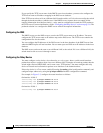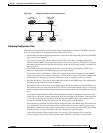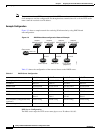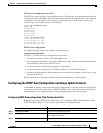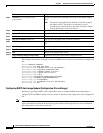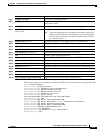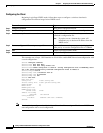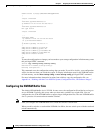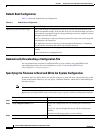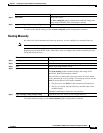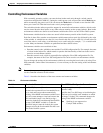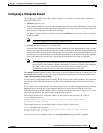
3-16
Catalyst 2960 and 2960-S Switch Software Configuration Guide
OL-8603-09
Chapter 3 Assigning the Switch IP Address and Default Gateway
Checking and Saving the Running Configuration
enable secret 5 $1$ej9.$DMUvAUnZOAmvmgqBEzIxE0
!
.
<output truncated>
.
interface gigabitethernet6/0/1
ip address 172.20.137.50 255.255.255.0
!
interface gigabitethernet6/0/2
mvr type source
<output truncated>
...!
interface VLAN1
ip address 172.20.137.50 255.255.255.0
no ip directed-broadcast
!
ip default-gateway 172.20.137.1 !
!
snmp-server community private RW
snmp-server community public RO
snmp-server community private@es0 RW
snmp-server community public@es0 RO
snmp-server chassis-id 0x12
!
end
To store the configuration or changes you have made to your startup configuration in flash memory, enter
this privileged EXEC command:
Switch# copy running-config startup-config
Destination filename [startup-config]?
Building configuration...
This command saves the configuration settings that you made. If you fail to do this, your configuration
will be lost the next time you reload the system. To display information stored in the NVRAM section
of flash memory, use the show startup-config or more startup-config privileged EXEC command.
For more information about alternative locations from which to copy the configuration file, see
Appendix A, “Working with the Cisco IOS File System, Configuration Files, and Software Images.”
Configuring the NVRAM Buffer Size
The default NVRAM buffer size is 512 KB. In some cases, the configuration file might be too large to
save to NVRAM. Typically, this occurs when you have many switches in a switch stack. You can
configure the size of the NVRAM buffer to support larger configuration files. The new NVRAM buffer
size is synced to all current and new member switches.
Note After you configure the NVRAM buffer size, reload the switch or switch stack.
When you add a switch to a stack and the NVRAM size differs, the new switch syncs with the stack and
reloads automatically.



